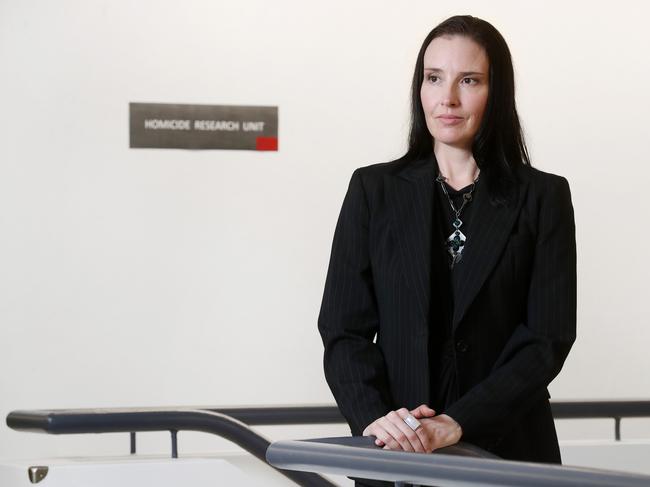‘Really surprised’: Study shatters theory on why men kill their female partners
A new study has shattered a commonly held belief on violent men and suggests Australia needs an urgent rethink on how best to save lives.
Crime in Focus
Don't miss out on the headlines from Crime in Focus. Followed categories will be added to My News.
Exclusive: Warning signs that could save Australian lives are being missed because of a narrow view of why men kill.
New research published in international journal Homicide Studies suggests there could be little difference between men who murder their partners and other killers.
But policymakers continue to place emphasis on behaviours and circumstances that “may not be as important as we think”, the study found.
Men who kill their female partners have long believed to be fuelled by gender factors like “power and control” and “entitlement”.
However, the report’s co-author Dr Samara McPhedran said socio-economic factors, upbringing and education played just as great a role — and were too often overlooked.
“Attitudes [towards women] are important; but have we reached a point in policymaking that we are so focused on addressing men’s attitudes to women that we are overlooking all these other factors that occur alongside that?” Dr McPhedran said.

The study — designed to get to the nub of Australia’s shocking domestic violence epidemic which sees a woman slain by her partner each week — used data from the Australian Homicide Project that interviewed more than 250 men convicted of murder or manslaughter.
She said traumatic experiences in childhood, including abuse and neglect, a lack of education, socio-economic differences were just as prominent.
“All these factors are very well known to contribute to homicide and are present with intimate partner homicides as other forms of homicide,” she said.

“When you look at the dialogue that’s been unfolding around intimate partner homicide, it has become very much focused around things like coercive control. And that’s important because, yes, coercive control is a part of this, but not to the exclusion of everything else. We were really surprised with the results that we got. And particularly what surprised us was just how similar in attitudes the different groups of men were.”
Dr McPhedran said the study findings should prompt an urgent education rethink.
“Have we focused too heavily on one set of responses at the expense of others? Because what our work is really suggesting is there is no one theory of men killing people that’s going to fit everyone. There’s no theory of men’s violence against women that’s superior,” she said.
Dr McPhedran said there was a danger of Australians dying who could have been saved.
“We want to maximise our chance of reducing violence or preventing homicide against women,” Dr McPhedran said.
Chief executive of Full Stop Australia Hayley Foster said there were a lot of generalised offenders who were responsible for “high repeat” incidents.

“They do have other kinds of criminal activity to their name and there are different profiles … obviously not all of the offenders match that description. But certainly, a large section of that kind of high risk profile do,” Ms Foster said.
“I think what’s really important to note is just because for some it’s very targeted just towards their partner or their children and others is generally sprayed across the population, including other men, doesn’t make it not-gendered.”





